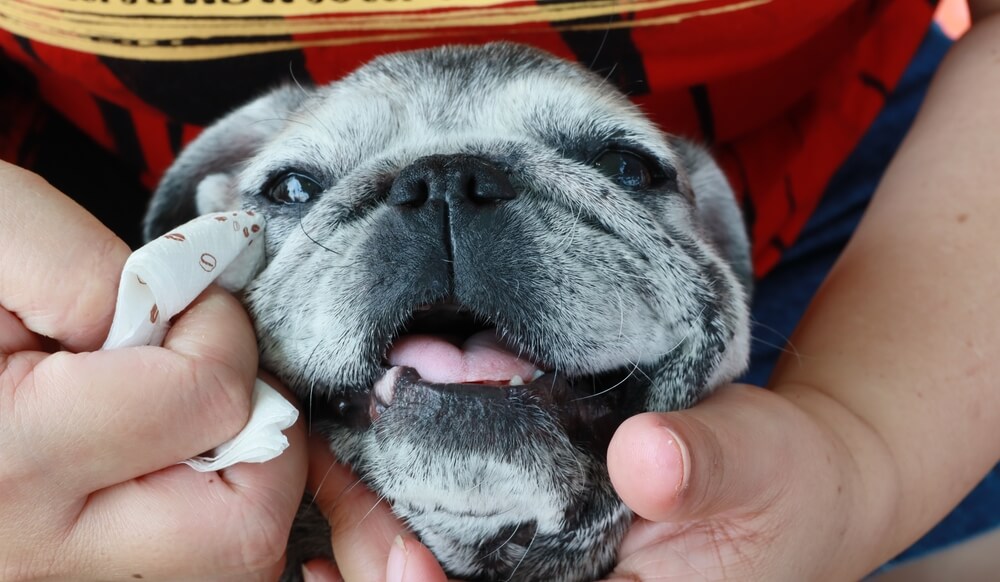Brachycephalic pets’ exaggerated physical features make them extremely cute, but their characteristics contribute to several health and welfare problems. Our 360 Pet Medical team wants to offer information about these problems for brachycephalic pet owners or those considering a brachycephalic pet adoption.
Brachycephalic pets
Brachycephalic means “short headed,” and these pets have been so-named because of their short, wide skull that makes their face appear flattened. Breeds include:
- Dogs — Brachycephalic dog breeds include bulldogs, boxers, Boston terriers, Pekingese, Shar-peis, pugs, Lhasa apsos, shih tzus, and bull mastiffs.
- Cats — Brachycephalic cat breeds include Persians, Himalayans, Burmese, British shorthairs, and exotic shorthairs.
Brachycephalic obstructive airway syndrome in pets
A brachycephalic pet’s facial structure results in undersized or flattened breathing passages that produce noisy or difficult breathing. These pets commonly experience exercise intolerance, and may retch or gag frequently, which is called brachycephalic obstructive airway syndrome (BOAS). Structural abnormalities in brachycephalic pets include:
- Stenotic nares — Most brachycephalic pets have narrowed nostrils that restrict airflow.
- Extended nasopharyngeal turbinates — When a pet inhales, bony ridges covered by tissue (i.e., nasopharyngeal turbinates) help humidify the air. In many brachycephalic pets, these structures are elongated, and they extend into the pharynx and obstruct airflow.
- Elongated soft palate — A brachycephalic pet’s soft palate may be elongated, blocking entrance to the trachea.
- Laryngeal collapse — In some brachycephalic pets, the chronic stress placed on the laryngeal cartilages inhibits the larynx’ ability to fully open, restricting airflow.
- Everted laryngeal saccules — In some brachycephalic pets, small saccules inside the larynx evert when the pet inhales forcefully.
- Hypoplastic trachea — Some brachycephalic pets have a narrowed trachea.
In severe BOAS cases, surgery is necessary to open up the airways. Potential procedures include enlarging stenotic nares, resecting the elongated soft palate, and removing the everted laryngeal saccules.
Brachycephalic ocular syndrome in pets
Brachycephalic breeds commonly have shallow eye sockets that can cause various eye abnormalities, which can potentially lead to eye trauma and ulceration (i.e., brachycephalic ocular syndrome [BOS]). Abnormalities include:
- Protruding eyes — Some brachycephalic pets’ eyes protrude excessively, preventing complete eyelid closure, and the unprotected cornea can become ulcerated.
- Facial skin folding — Some brachycephalic pets have exaggerated facial skin folds that may contact their protruding eyes and result in irritation or ulceration.
- Abnormal tear production — Some brachycephalic pets produce excessive tears, which leads to tear staining and irritation, while others do not produce enough tears, which results in dry eyes.
Surgical procedures can help correct some BOS abnormalities, but many brachycephalic pets require frequent or life-long topical eye medications to address these issues.
Brachycephalic dental disease in pets
All pets are at risk for dental disease, and most exhibit signs by 3 years of age. However, brachycephalic pets are at greater risk, because their shortened facial bones reduce the gum area in their mouth, which causes overcrowded teeth and increases the chances of food and other materials being trapped between the teeth. Bacteria attracted to this material cause inflammation and infection in the tissues supporting the teeth. In addition, the bacteria can enter the pet’s bloodstream, damaging organs throughout the body. Regular professional veterinary cleanings and at-home toothbrushing can help prevent dental disease, and tooth extractions may be necessary in some cases to reduce overcrowding.
Brachycephalic skin and ear disease in pets
Brachycephalic pets commonly have multiple deep skin folds, especially on their face and around their tail. These skin folds provide an ideal environment for fungi and bacterial growth, resulting in skin infections. Some of these cases can be prevented by surgically removing the skin folds, but often the pet and their owner must battle skin infections throughout the pet’s life.
Many brachycephalic pets also have narrowed ear canals, which inhibit proper drainage and predispose them to ear infections.
Brachycephalic spinal malformations in pets
Some brachycephalic dog breeds, such as the British bulldog, French bulldog, pug, and Boston terrier, have a tail malformation called a screw tail. The pet’s tail curls because fewer vertebrae form their tail, and the vertebrae are fused together. These dogs often have other spinal deformities, such as spinal cord compression, spinal cysts, and intervertebral disc disease, that can lead to problems such as spinal pain, partial or complete paralysis, and urinary or fecal incontinence.
Brachycephalic birthing difficulties in pets
Many brachycephalic pets have difficulty giving birth. Complications include:
- Dystocia — Many brachycephalic pets are bred specifically to have a large head, broad shoulders, and a narrow pelvis, which means the baby’s head and shoulders are often too large to fit through the mother’s pelvic canal. Surgical intervention is necessary in many cases to deliver the babies safely by cesarean section.
- Difficulty breathing — BOAS makes breathing difficult for affected pets, especially during the stress and physical exertion required when giving birth.
Helping brachycephalic pets

Some issues that affect brachycephalic pets can’t be helped, but you can take steps to help ensure your pet has fewer issues. Steps include:
- Maintaining a healthy weight — Overweight brachycephalic pets have more breathing difficulties, skin infections, and spinal complications, but keeping your pet at a healthy weight will help reduce these problems.
- Scheduling regular wellness care — Involve our veterinary team, so we can make recommendations as needed to address your pet’s complications.
- Monitoring skin folds — If your pet has deep skin folds, check and clean these areas regularly to help prevent infection.
Brachycephalic pets require additional care to help reduce health complications caused by their unique characteristics. If your pet has a brachycephalic related problem, contact our 360 Pet Medical team, so we can address the issue and help alleviate your pet’s discomfort.








Leave A Comment